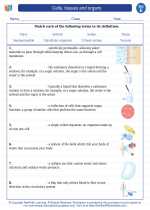Cells, tissues and organs -> earthquakes
Earthquakes
Earthquakes are the result of a sudden release of energy in the Earth's crust that creates seismic waves. These waves cause the ground to shake, often resulting in the destruction of buildings and other structures. Earthquakes can also trigger landslides, tsunamis, and volcanic activity.
Causes of Earthquakes
Earthquakes are caused by the movement of tectonic plates beneath the Earth's surface. When these plates collide, slide past each other, or pull apart, they generate stress that builds up over time. When this stress exceeds the strength of the rocks, it is released in the form of an earthquake.
Measuring Earthquakes
Earthquakes are measured using instruments called seismographs, which record the shaking of the ground. The magnitude of an earthquake is determined using the Richter scale or the moment magnitude scale. These scales measure the energy released by an earthquake, with each whole number increase representing a tenfold increase in amplitude.
Study Guide
Here are some key concepts to understand about earthquakes:
- Tectonic Plates: Learn about the Earth's tectonic plates and how their movement causes earthquakes.
- Seismic Waves: Understand the different types of seismic waves and how they travel through the Earth.
- Effects of Earthquakes: Explore the various impacts of earthquakes, including damage to infrastructure, tsunamis, and other secondary effects.
- Measuring Earthquakes: Familiarize yourself with the Richter scale and moment magnitude scale, and how they are used to quantify the strength of earthquakes.
- Earthquake Preparedness: Learn about earthquake safety measures and emergency preparedness in earthquake-prone areas.
By studying these concepts, you will gain a comprehensive understanding of earthquakes and their impact on the Earth's surface.
[Earthquakes] Related Worksheets and Study Guides:
.◂Science Worksheets and Study Guides Fifth Grade. Cells, tissues and organs

 Worksheet/Answer key
Worksheet/Answer key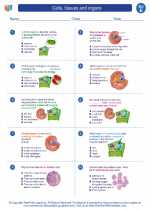
 Worksheet/Answer key
Worksheet/Answer key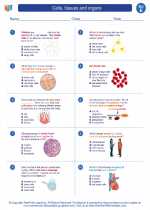
 Worksheet/Answer key
Worksheet/Answer key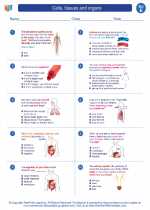
 Vocabulary/Answer key
Vocabulary/Answer key
 Vocabulary/Answer key
Vocabulary/Answer key
 Vocabulary/Answer key
Vocabulary/Answer key
 Vocabulary/Answer key
Vocabulary/Answer key
 Vocabulary/Answer key
Vocabulary/Answer key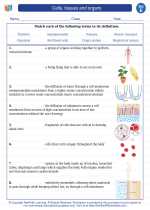
 Vocabulary/Answer key
Vocabulary/Answer key